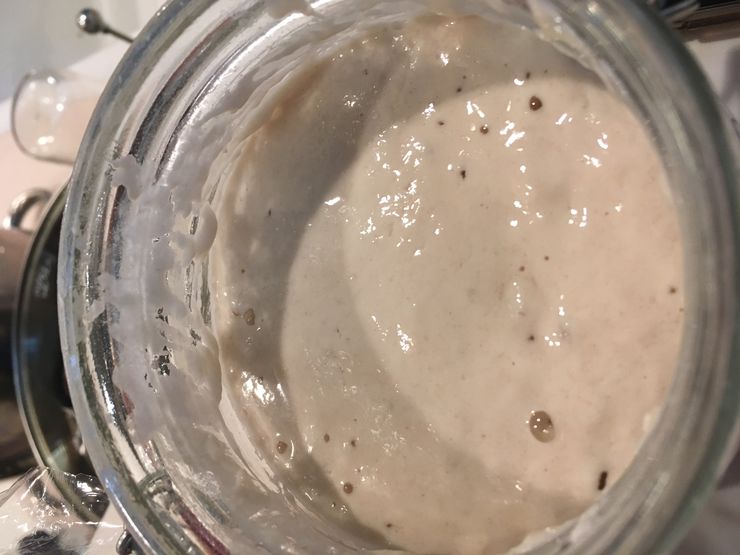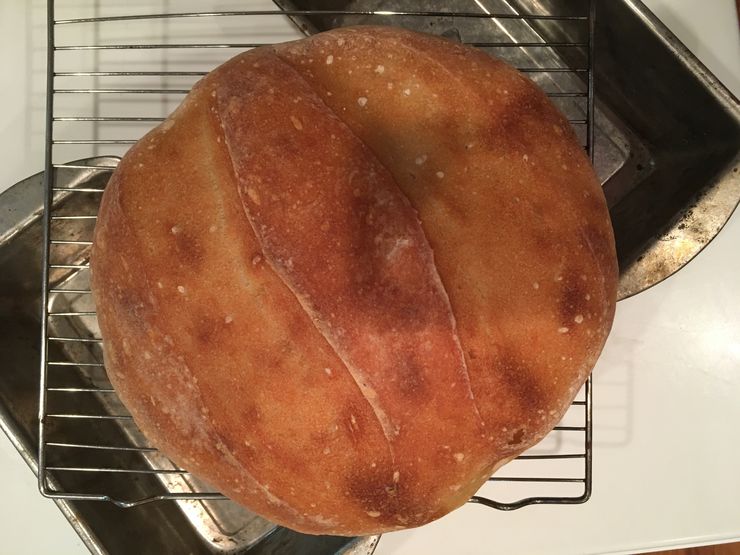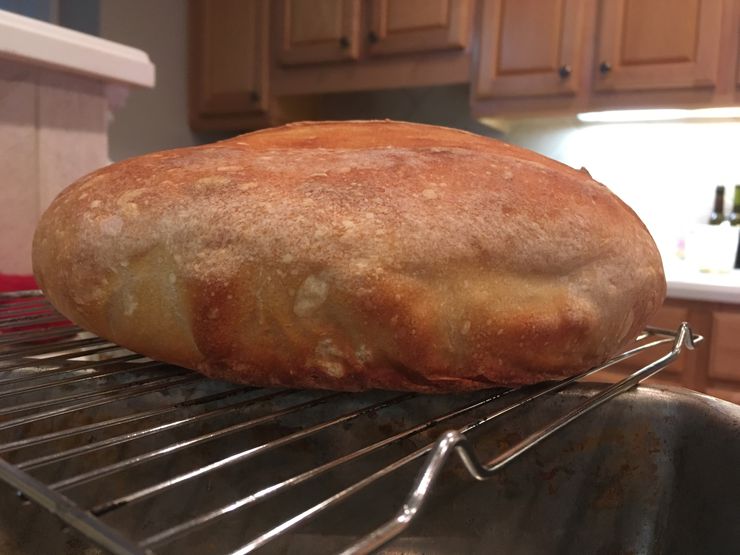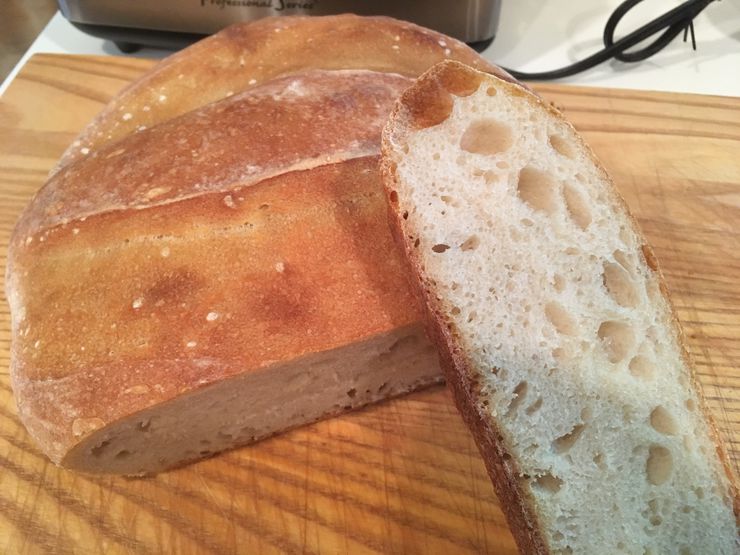2018-10-28
Based on
Ingredients
| Ingredient | Weight (grams) | Baker’s Percentage |
|---|---|---|
| King Arthur Bread Flour | 473 | 100.0% |
| Filtered water | 298 | 63.0% |
| Kosher salt | 9 | 2.0% |
| Sourdough Starter * | 254 | 53.7% |
* Ischia Island (Italy) sourdough starter at 100% hydration
Total hydration: (298+(254/2))/(473+(254/2)) = 70.8%
Process
Feed starter and allow to ferment at 85.0 degrees Fahrenheit for 2 hours. I use a sous vide circulator to maintain temperature while fermenting starter.
Mix 423 grams of flour and all of the water until combined, cover, and rest (autolyse) for 40 minutes.
Add salt and 65 grams of sourdough starter. Combine. Allow to rise at room temperature for 2 hours.
Add remainder of sourdough starter. Mix using Kitchen Aid mixer with dough hook on the lowest speed for 12 minutes. Add more flour (I added 50 grams) to form a stable, but rather wet dough.
Transfer to a lightly olive-oiled container with top, cover, and refrigerate (37 degrees Fahrenheit) for 4.5 days.
Remove dough from refrigerator and allow it to warm up at room temperature for 1 hour.
Flour work surface. Fold dough into thirds 5 times. Add flour if needed to form a firm dough.
Preheat oven to 410 degrees Fahrenheit with a cast iron skillet on the bottom rack.
Shape dough into a round, and place seam-side-up in banneton. Wrap banneton in plastic wrap and allow to proof at 68 degrees Fahrenheit until dough passes the poke test (about another hour).
Turn dough out of banneton, onto parchment paper. Flour the top of the loaf and score with a razor blade at a 30 degree angle.
Place loaf and parchment paper in hot cast iron skillet, spray with filtered water, place top on skillet, and spray sides of oven with water. Close oven door immediately.
Bake with top on the cast iron skillet for the first 20 minutes, then remove top and spray top of loaf and sides of oven again with filtered water. Close oven door immediately.
Bake until internal temperature reaches 205 degrees, approximately 25 minutes after removing the top from the cast iron skillet.
Notes
This loaf was baked in Atlanta, GA (~1,050 feet elevation, compared to typical elevation of ~8,750 feet).
Dough was quite bubbly and a little thin after bulk fermentation. Definitely seemed over-fermented. Smell was slightly alcoholic.
After 2-3 days of bulk fermentation the dough had a nice nutty/sweet aroma.
Bottom of loaf didn’t sound quite hollow after removing from oven.
Oven spring was not very good.
Salt content was a little low.
Crumb was a bit moist and dense. Not quite gummy, but certainly not fluffy. Crust could have been a bit darker.
Still very little sour flavor.
Scoring with 2 lines down the center is easy but seems to produce a weirdly-shaped loaf. I think earlier pinwheel scoring is better.
Images





Upcoming experiments
Consider making the dough a bit drier for the bulk fermentation stage. Some articles mention that a drier starter makes a more sour bread. Might extend to the bulk fermentation phase as well. This bread was (275+150)/(444+150)=71.5+% hydration during bulk ferment; maybe try to get below 68% (or lower) and see how it goes.
Consider using a banneton without liner for improved shape.
Consider turning on convection bake (and turning oven temp to 450 degrees Fahrenheit) earlier, maybe when internal temperature is 185 or 190 degrees Fahrenheit. Also consider leaving loaf in the oven for ~5 minutes after it reaches 194 degrees Fahrenheit.